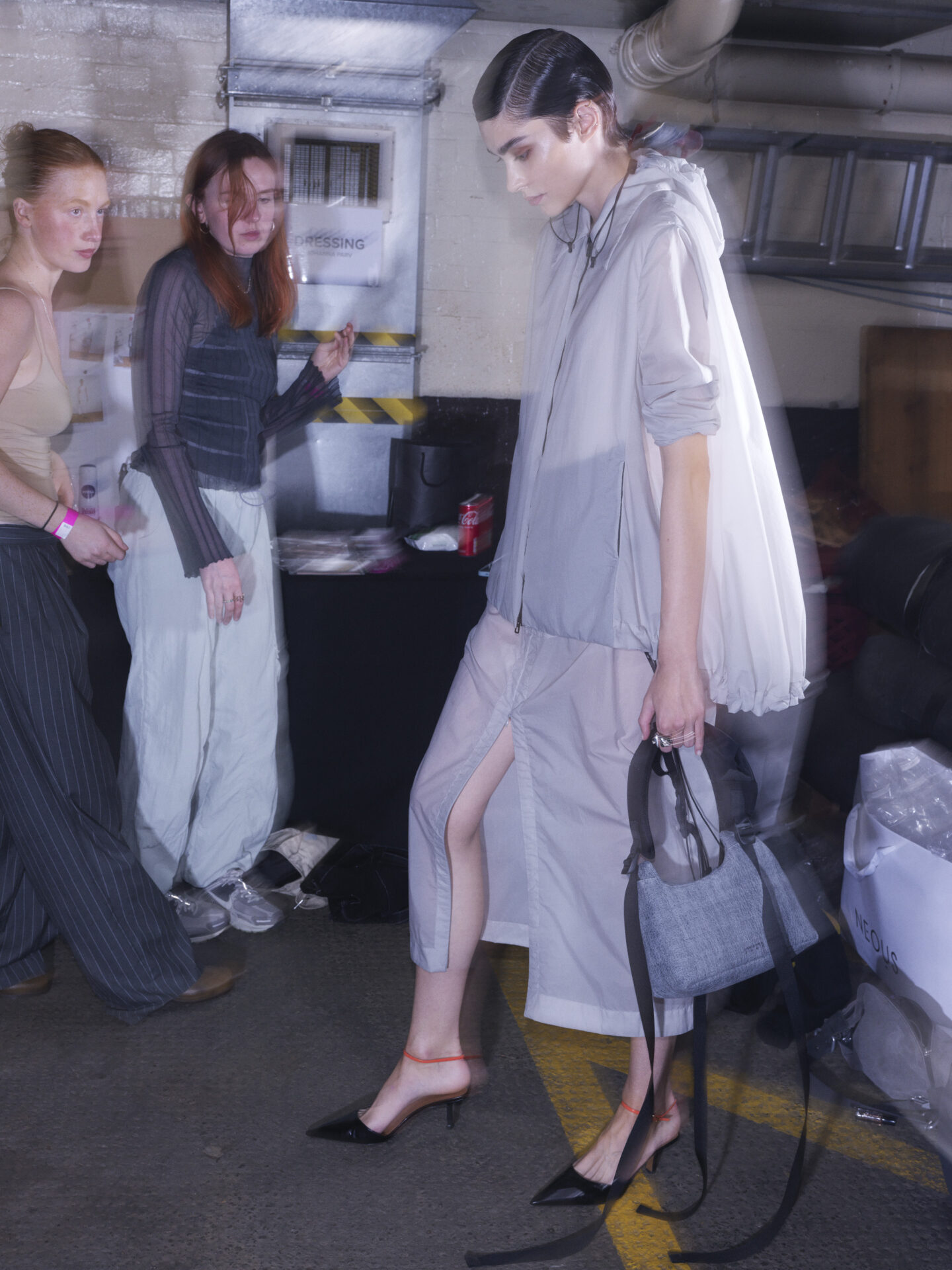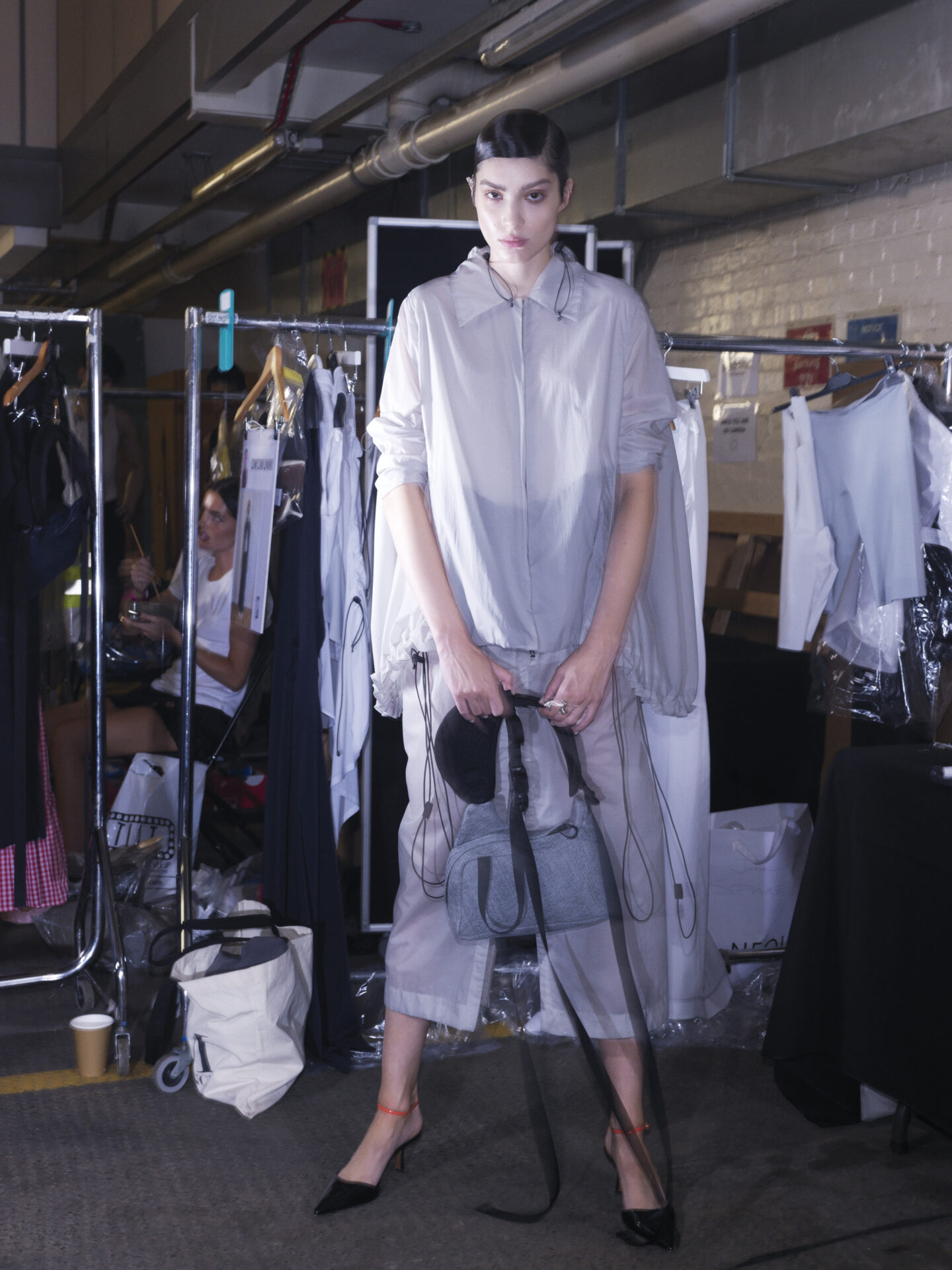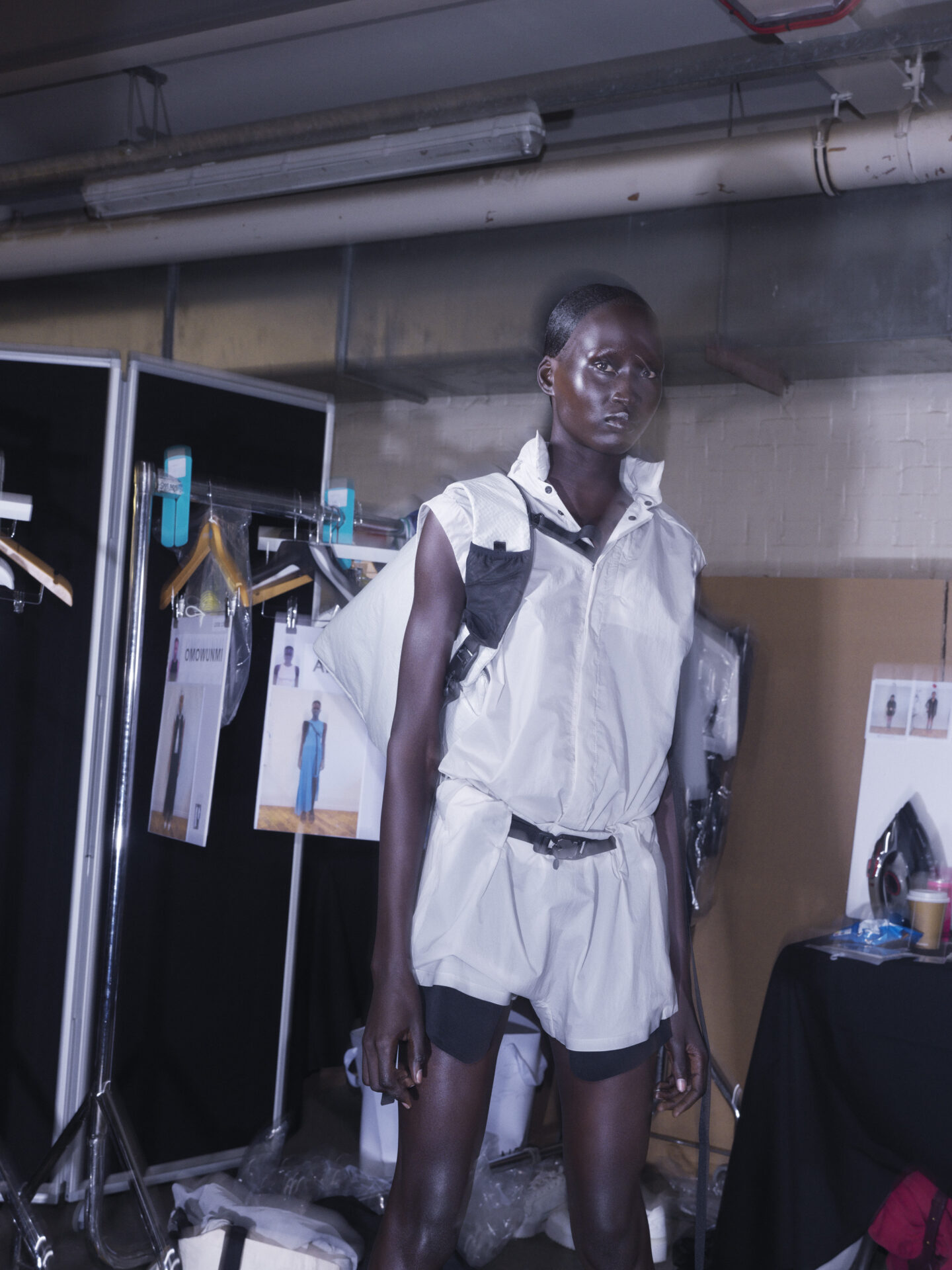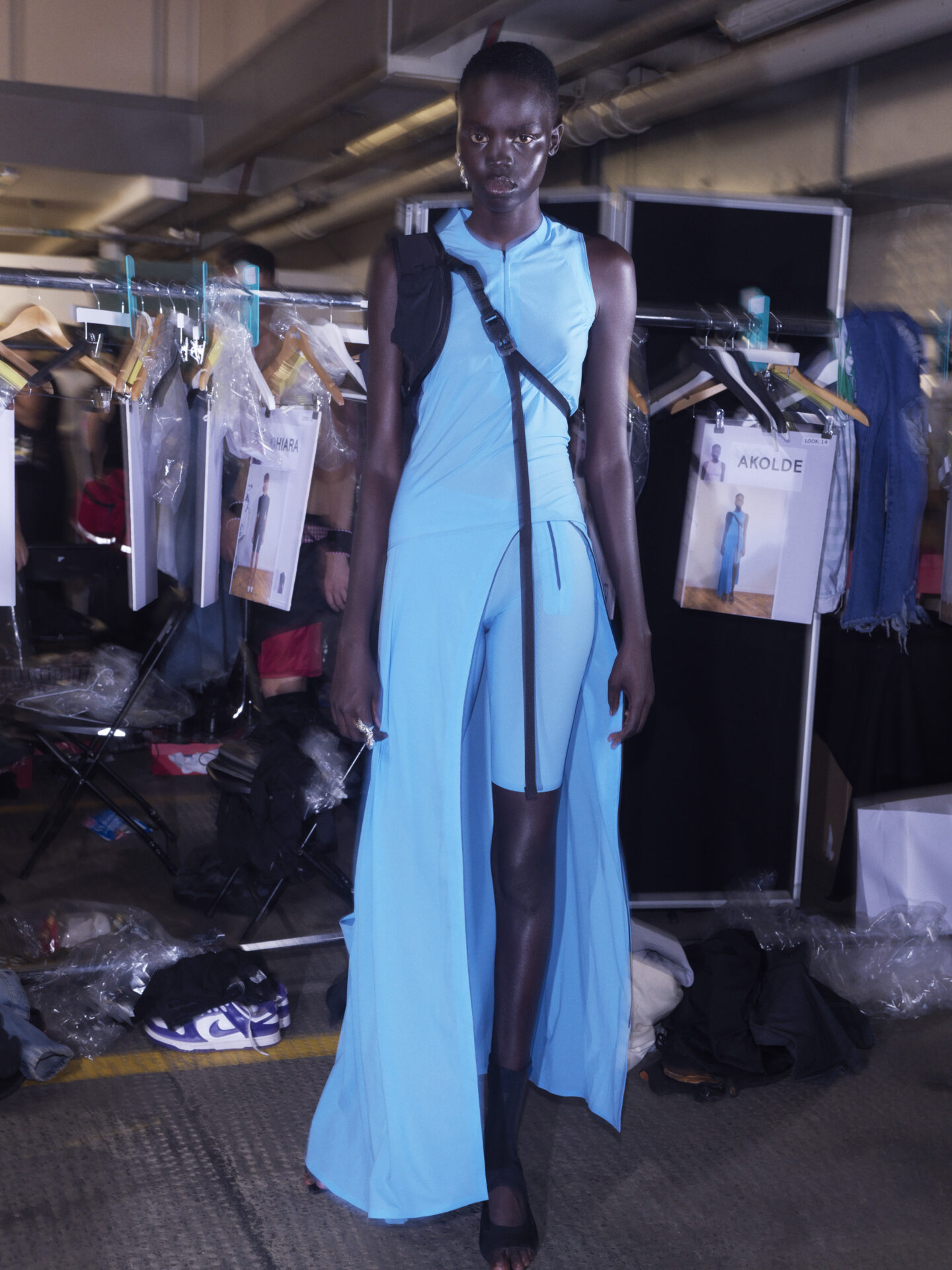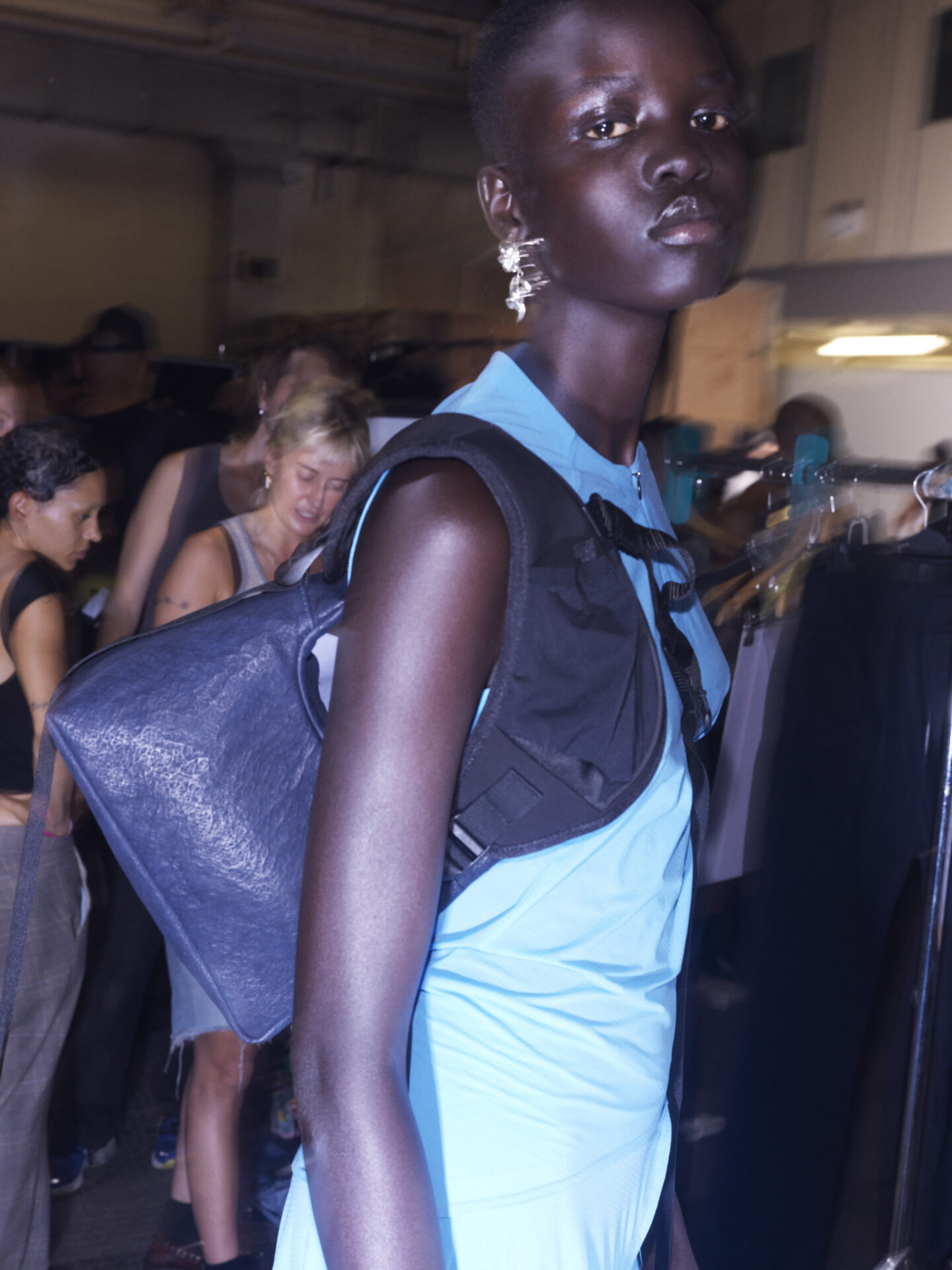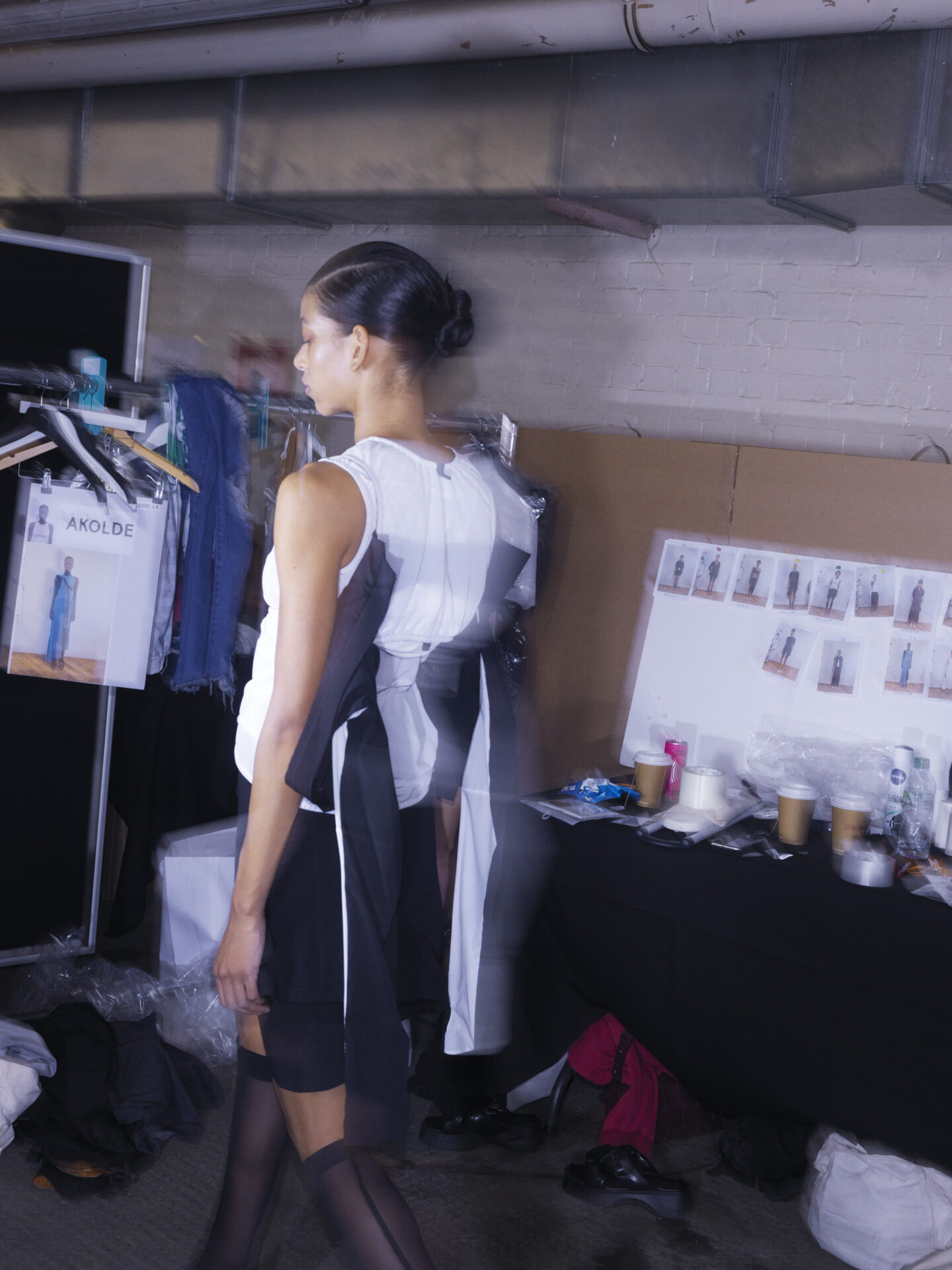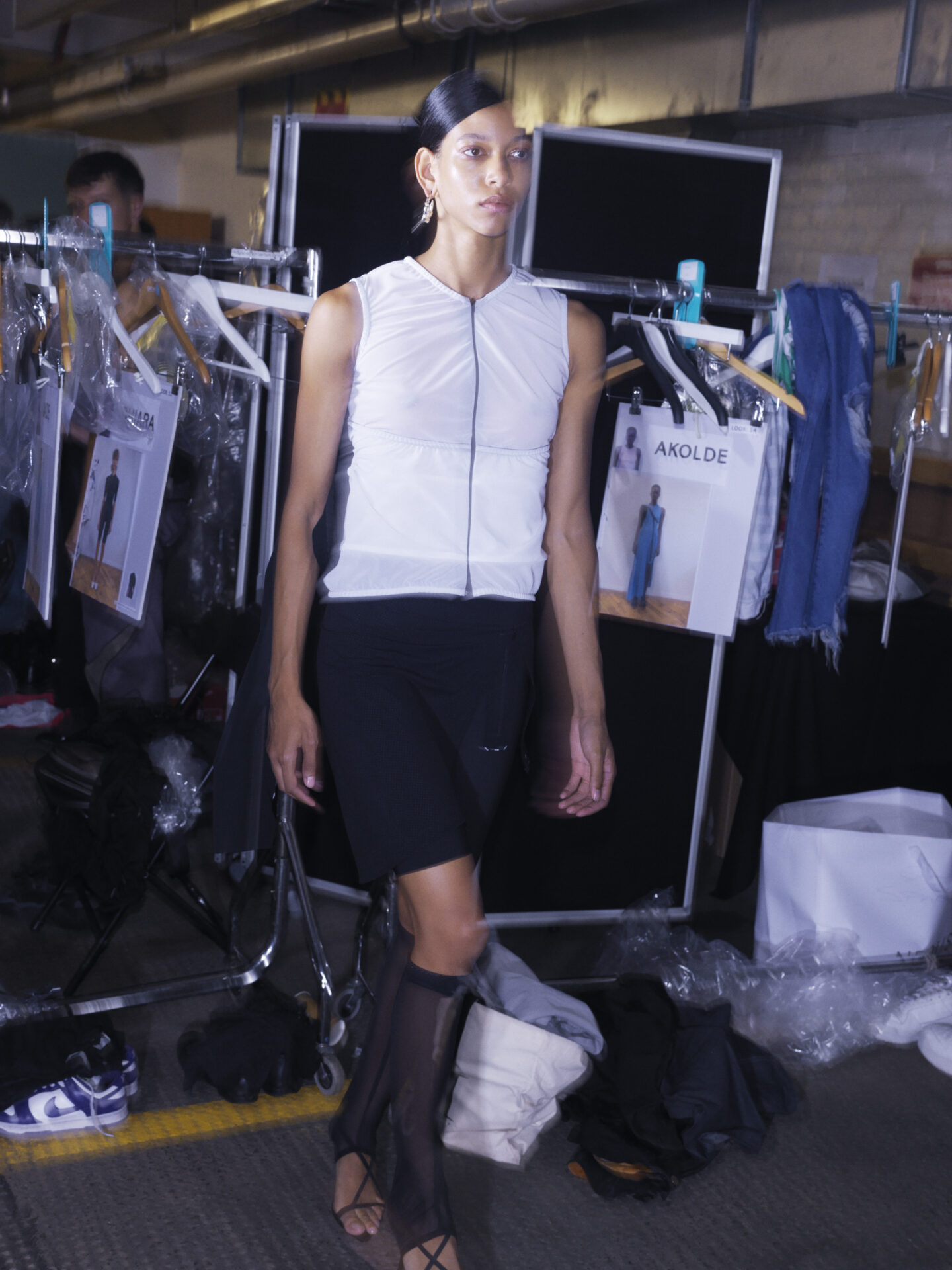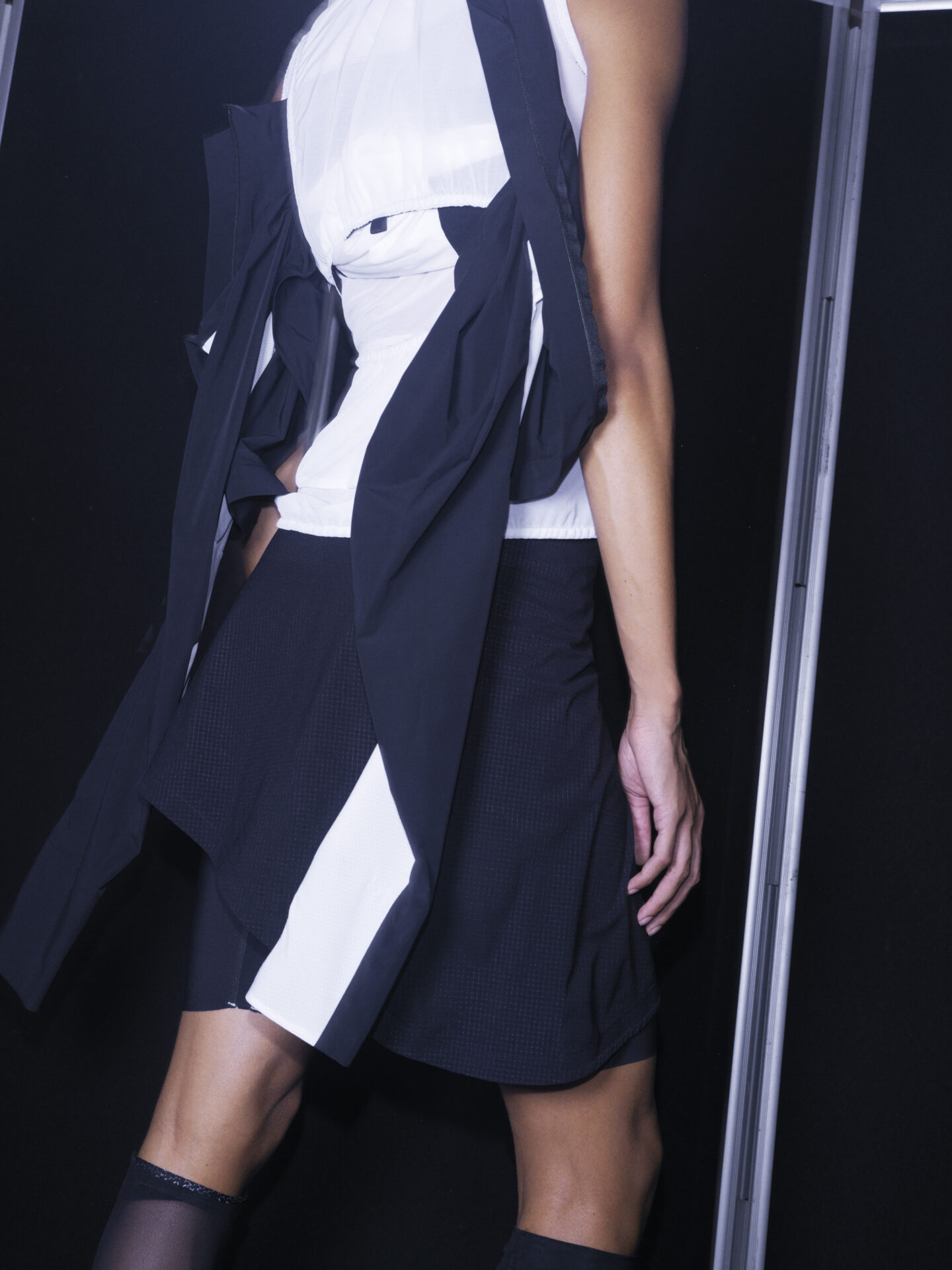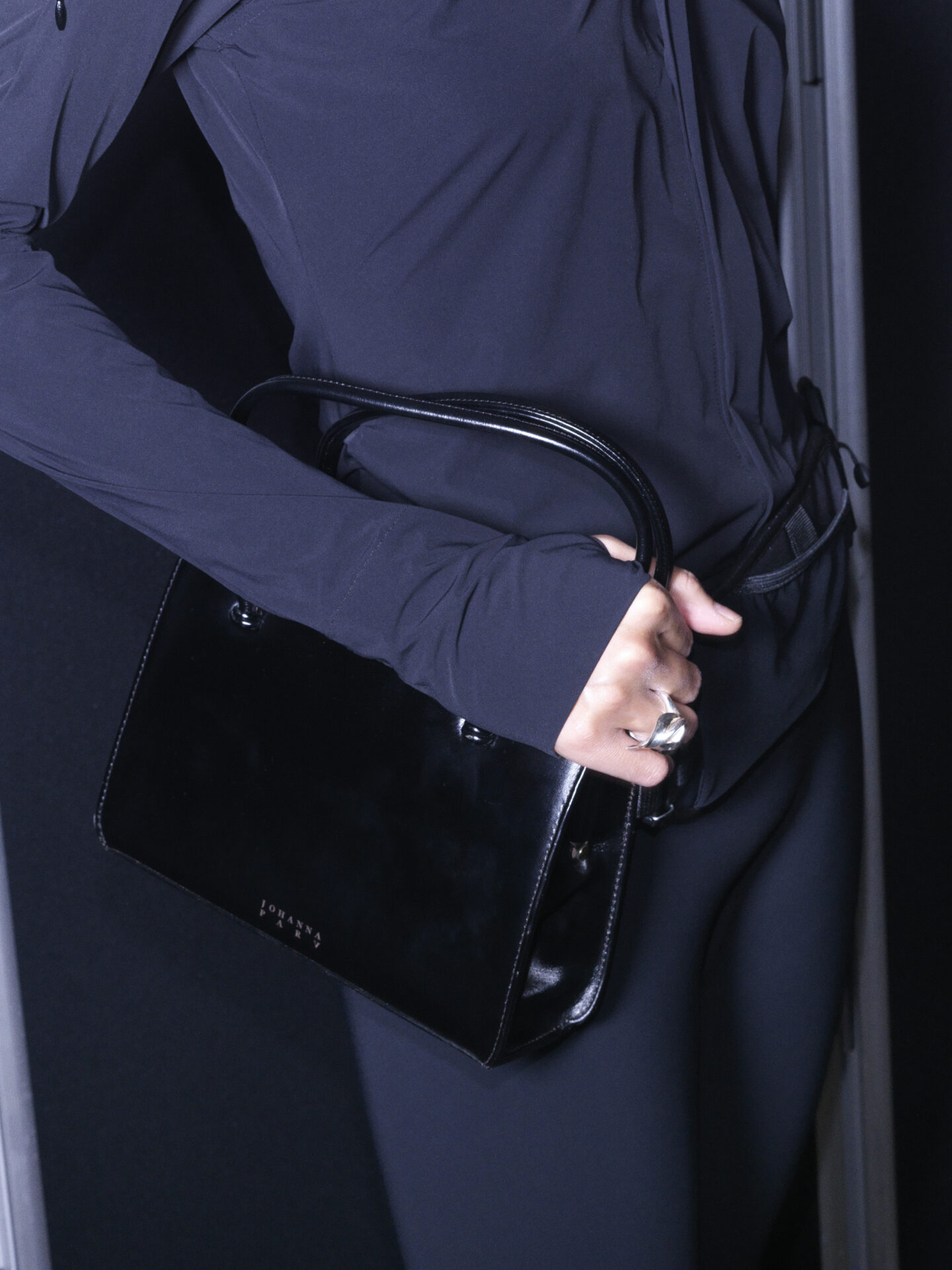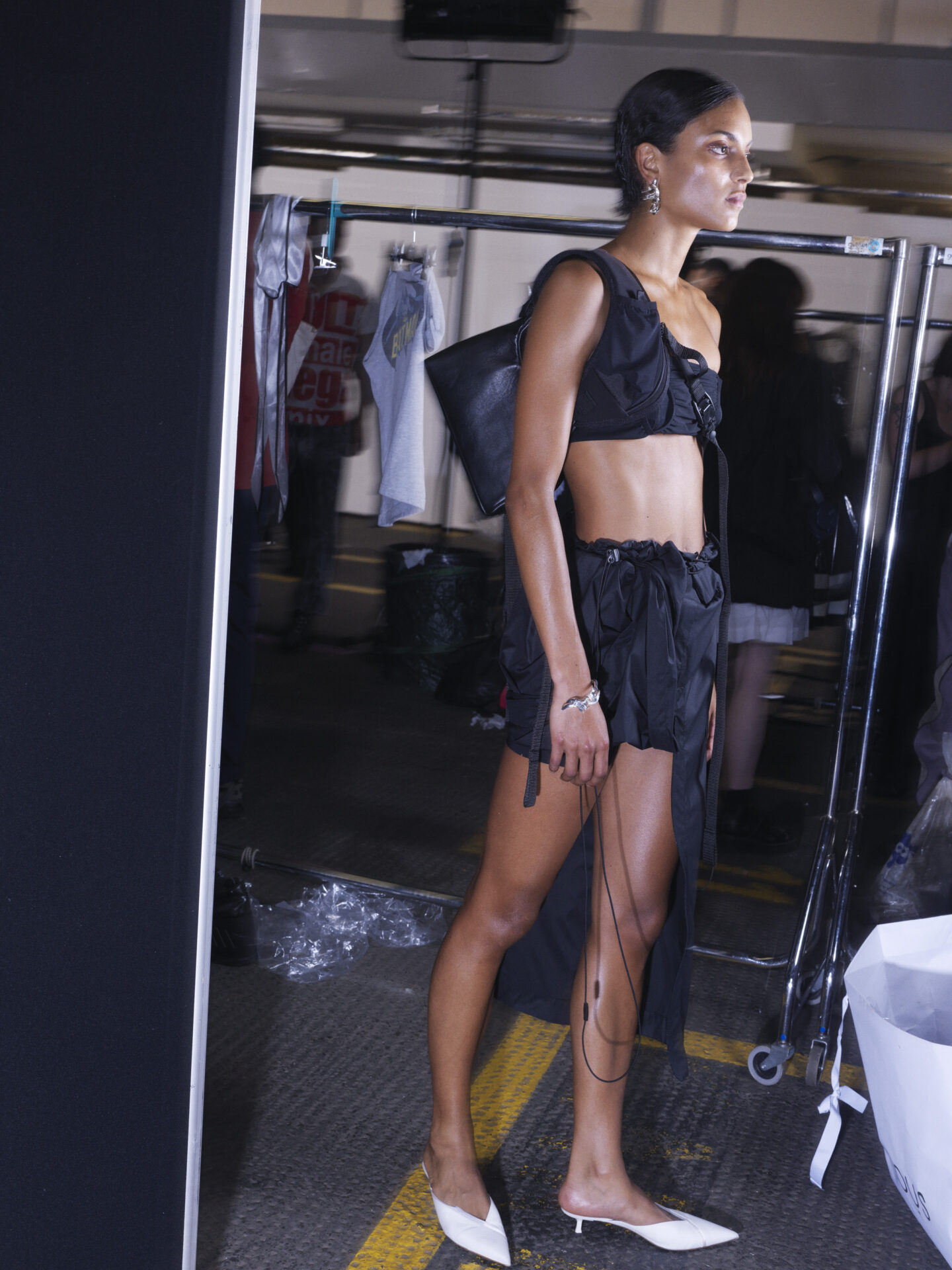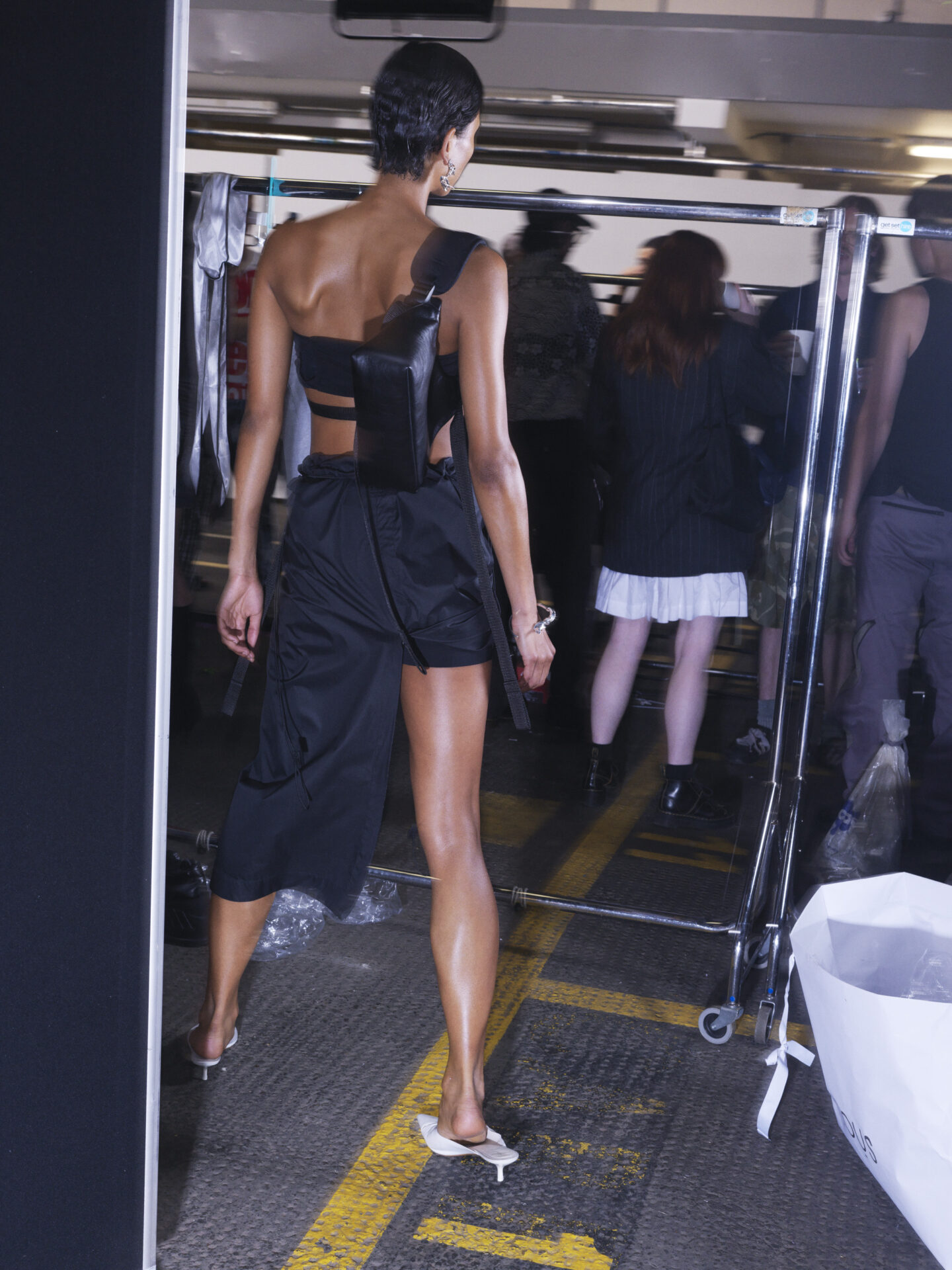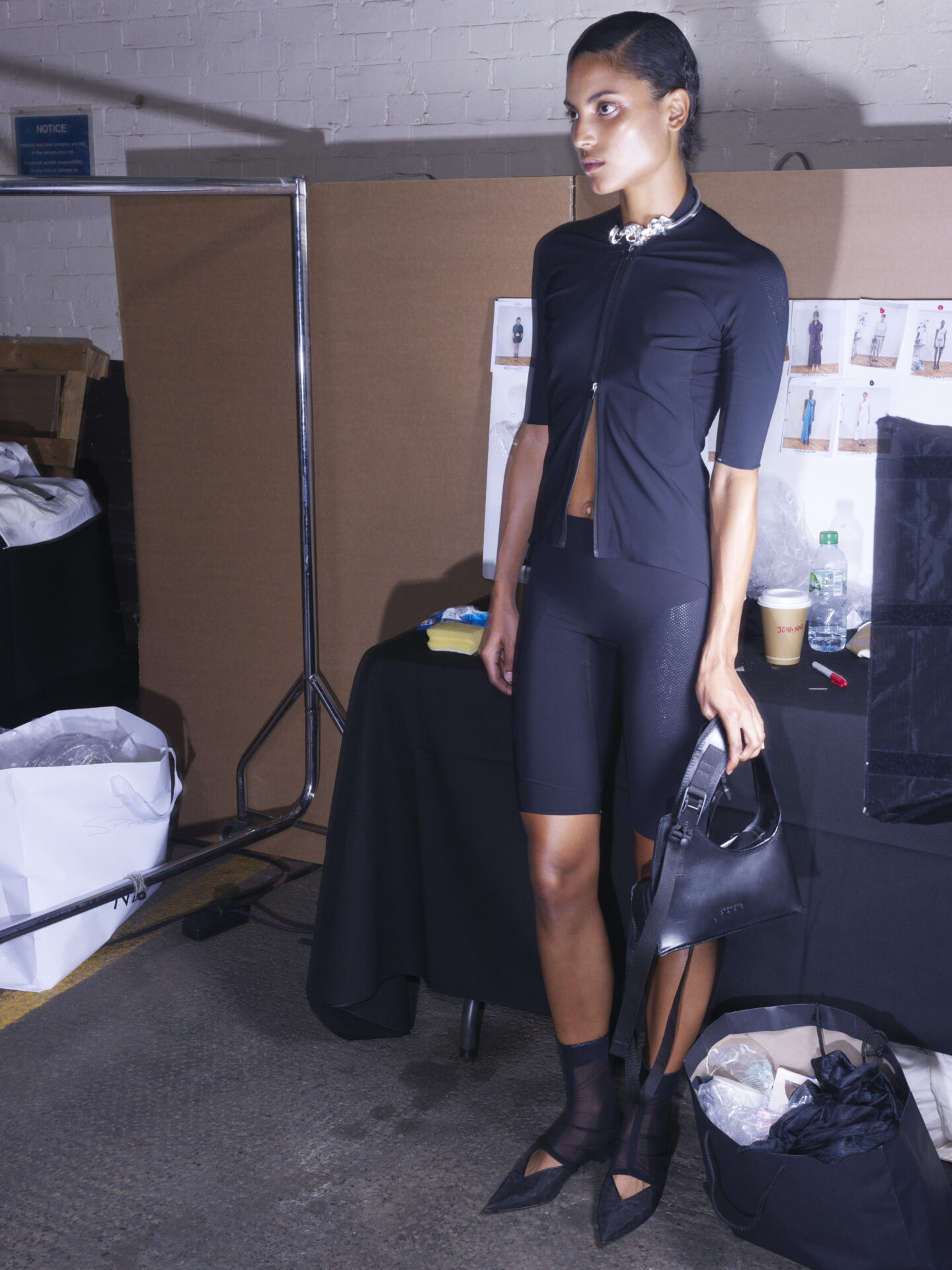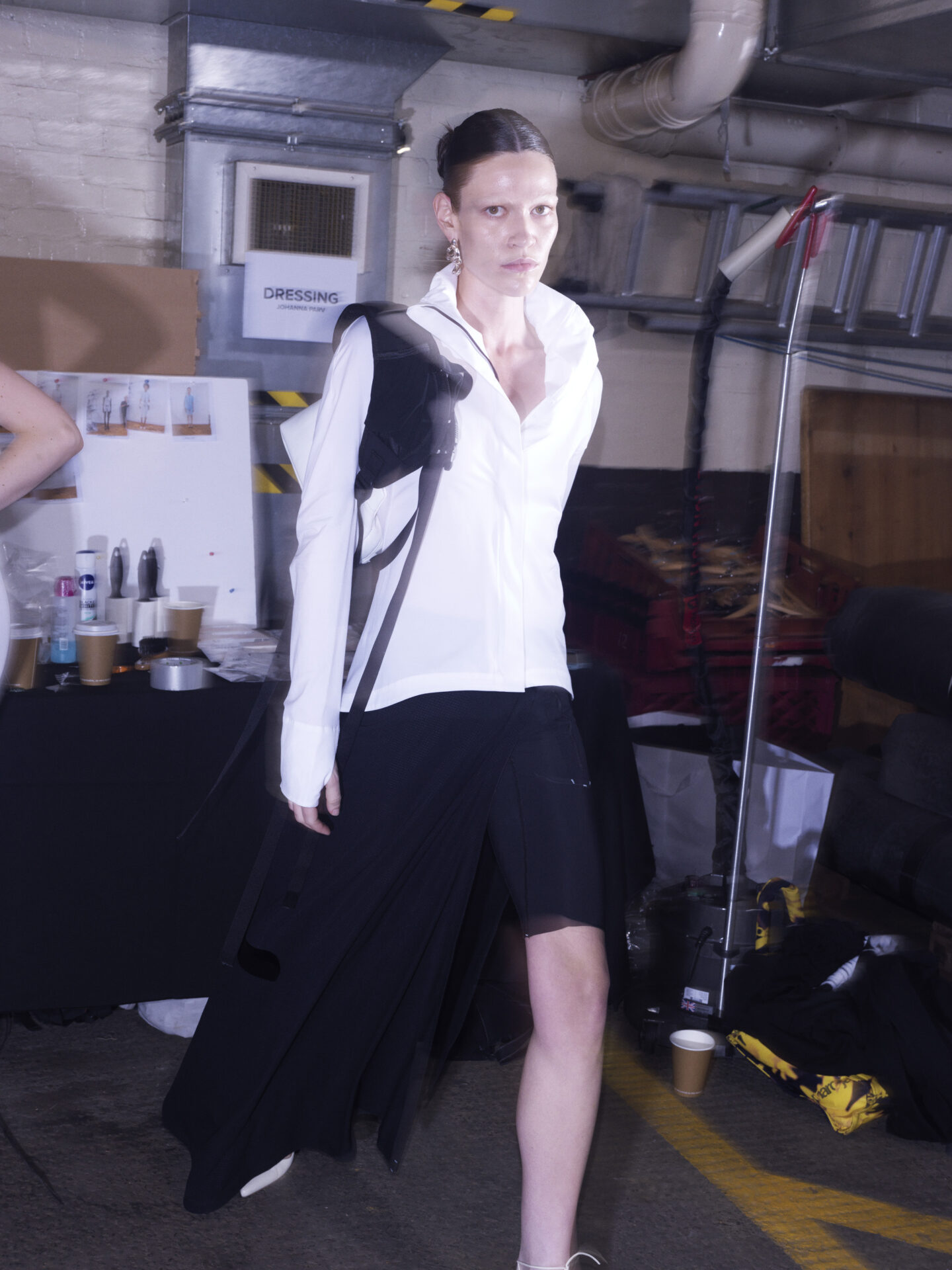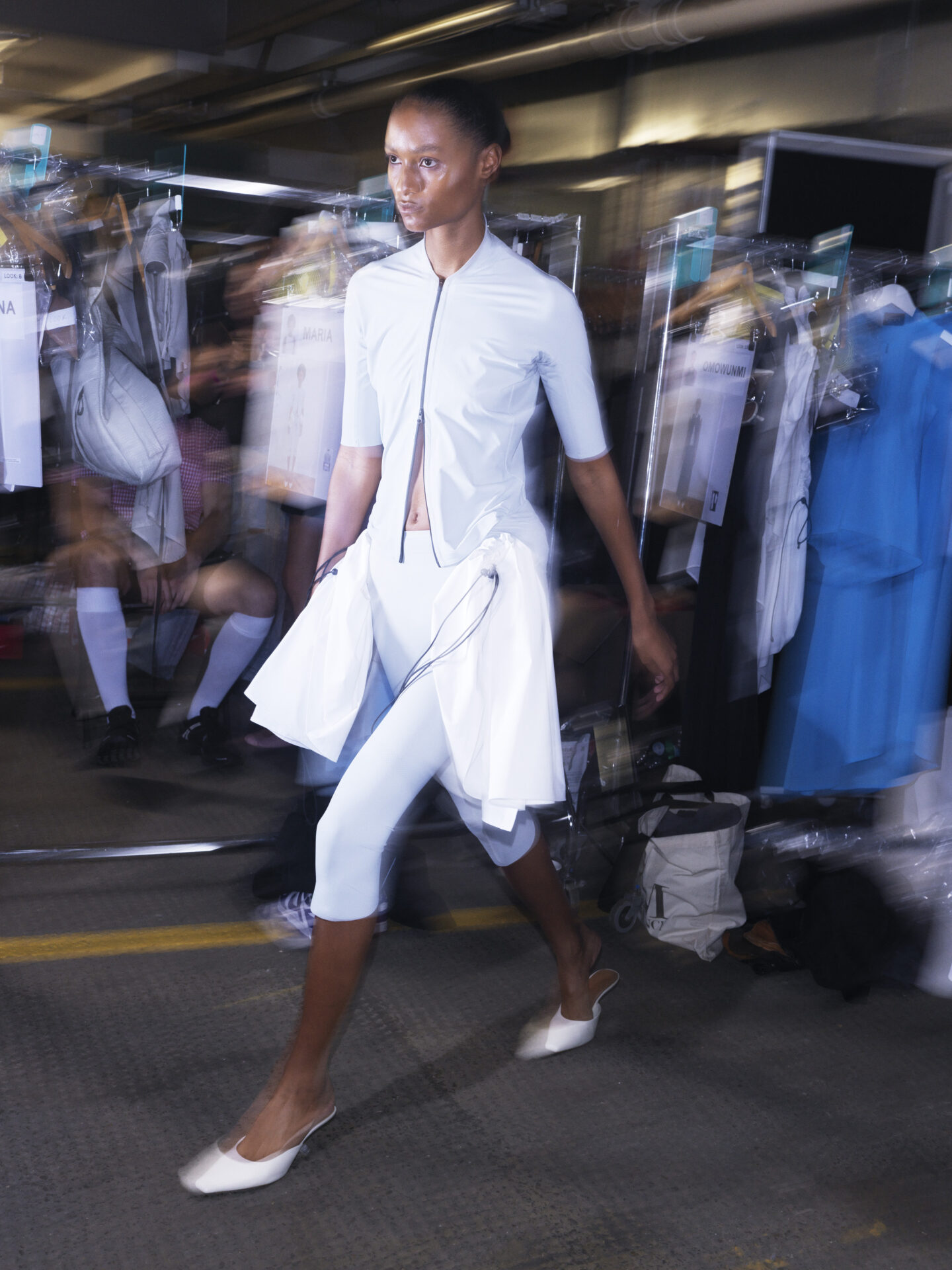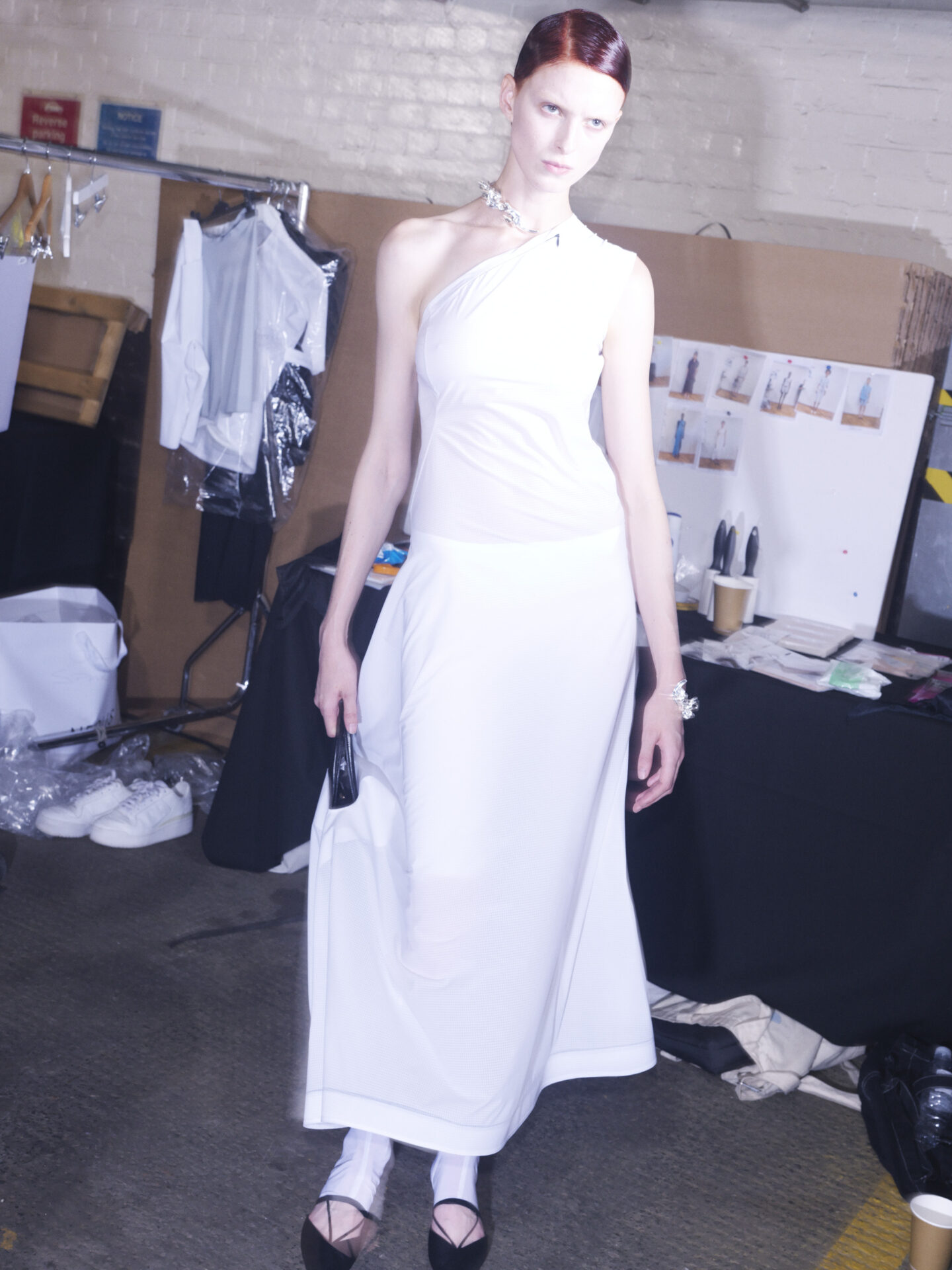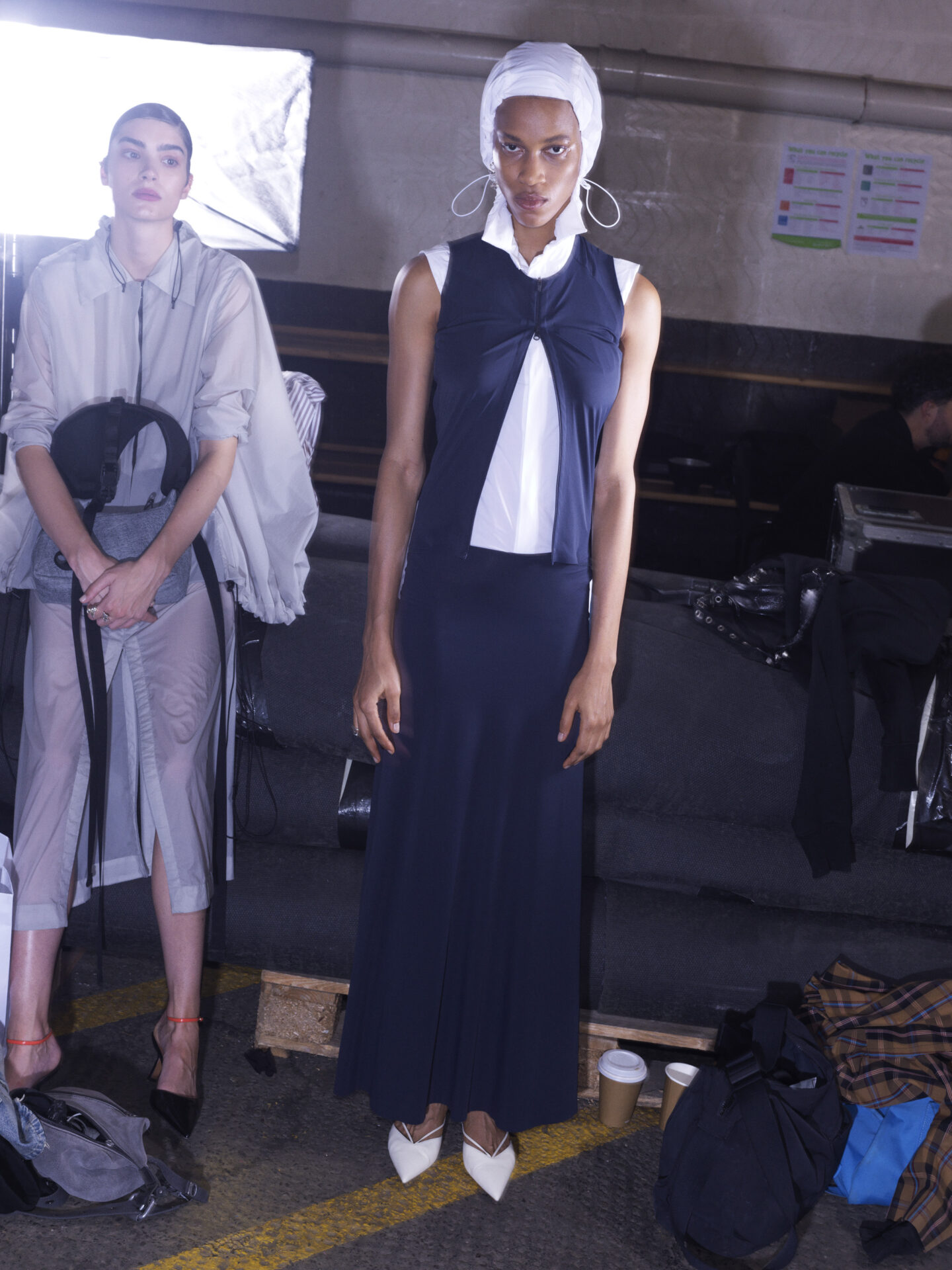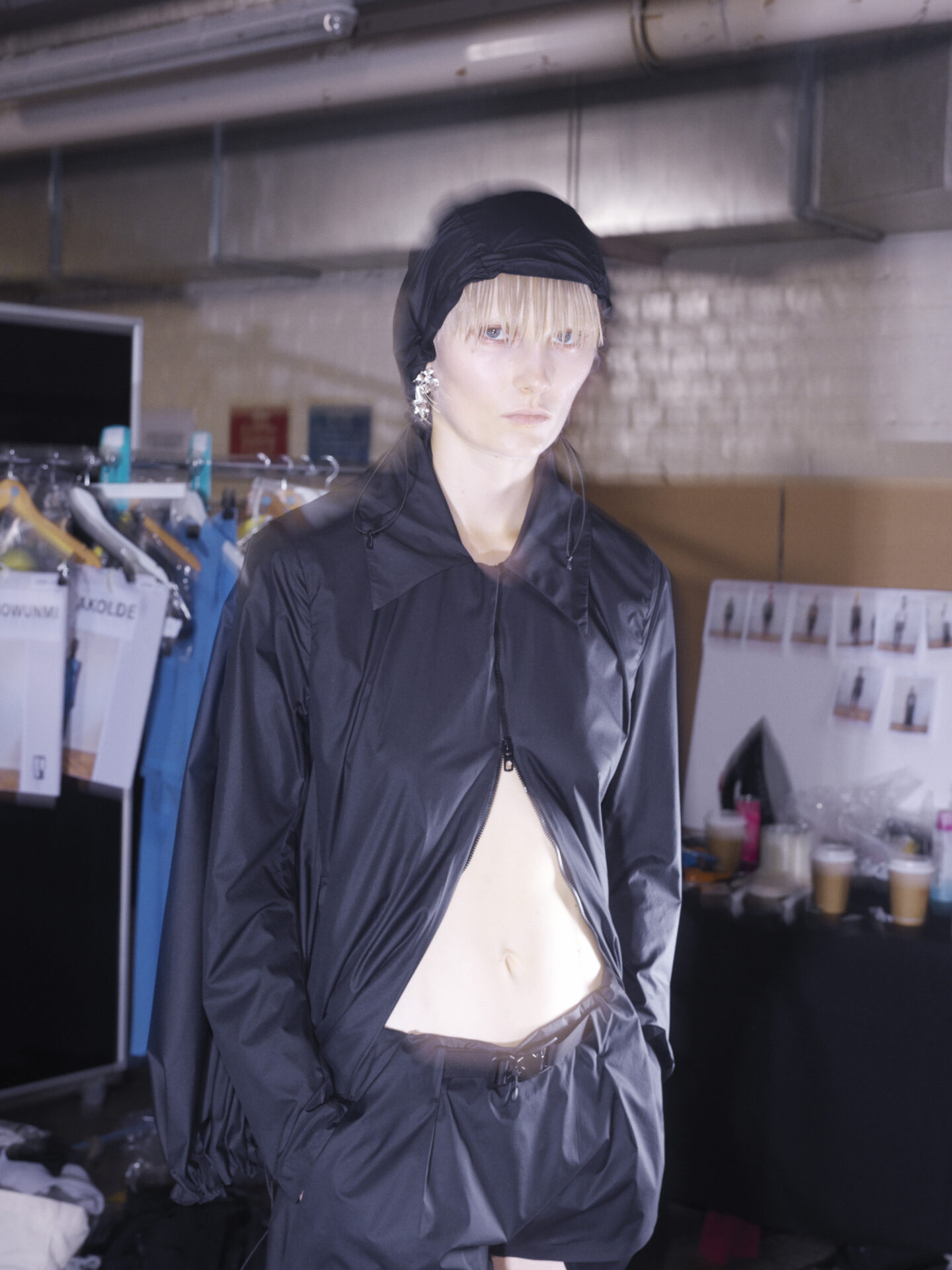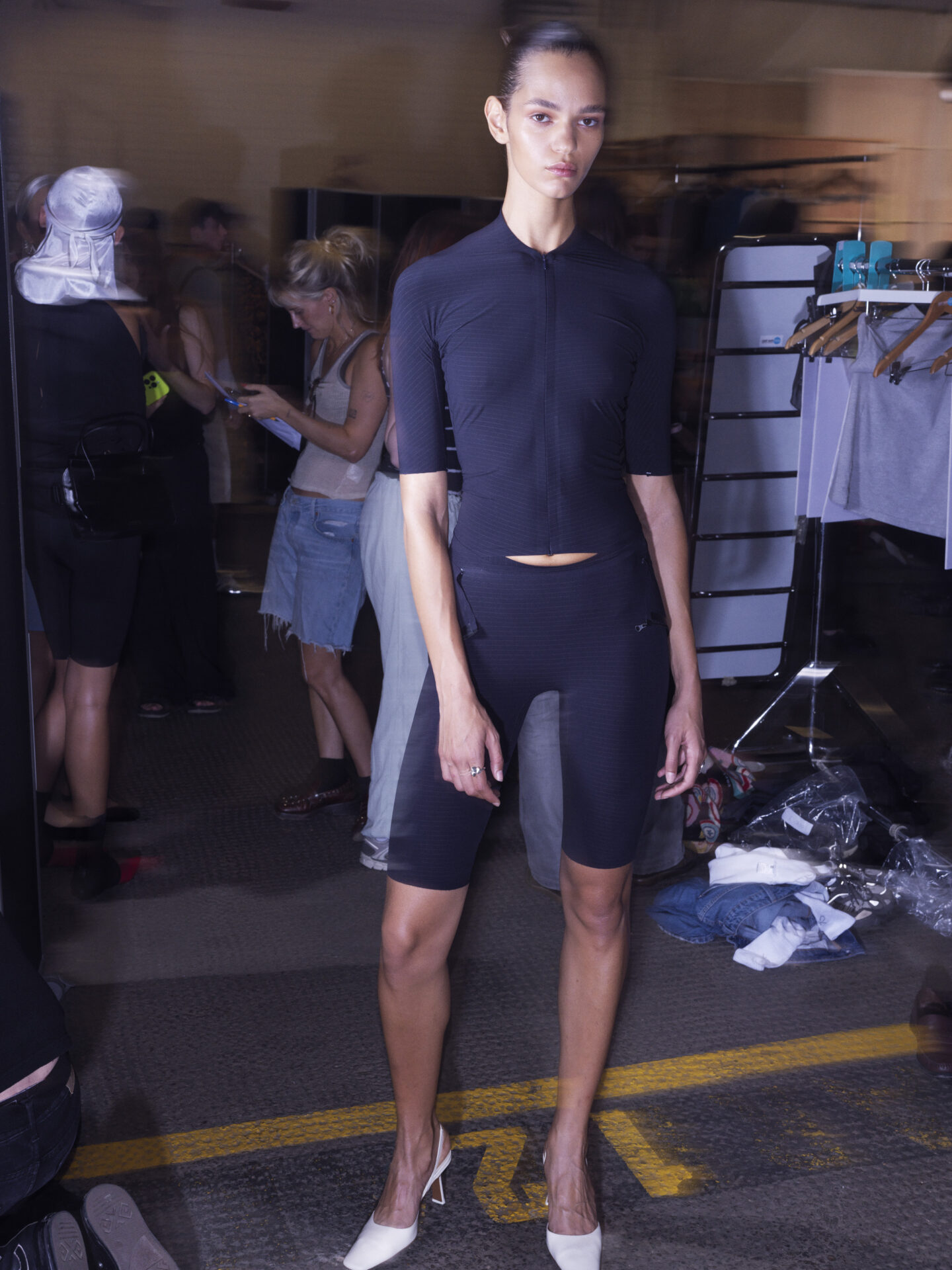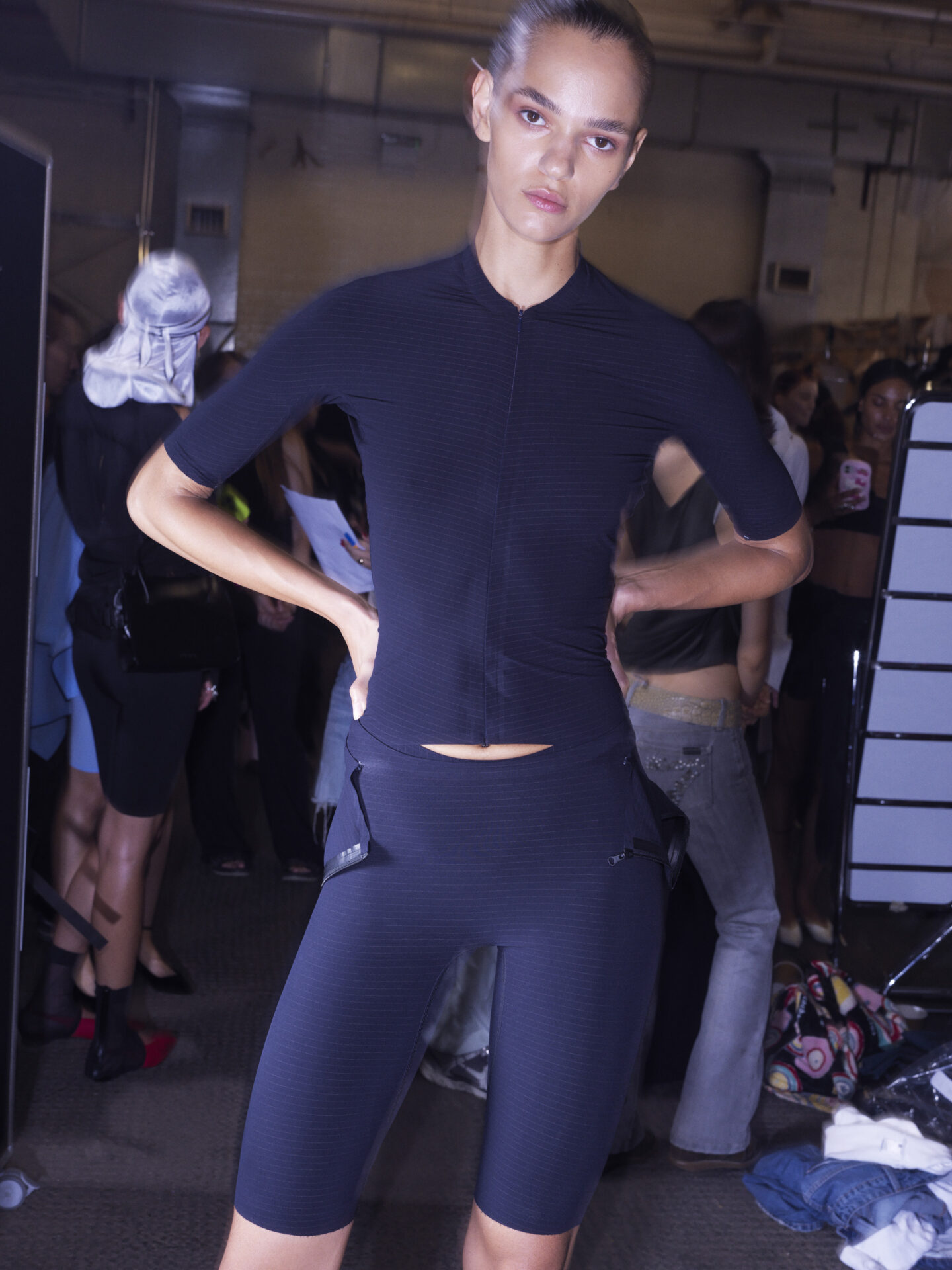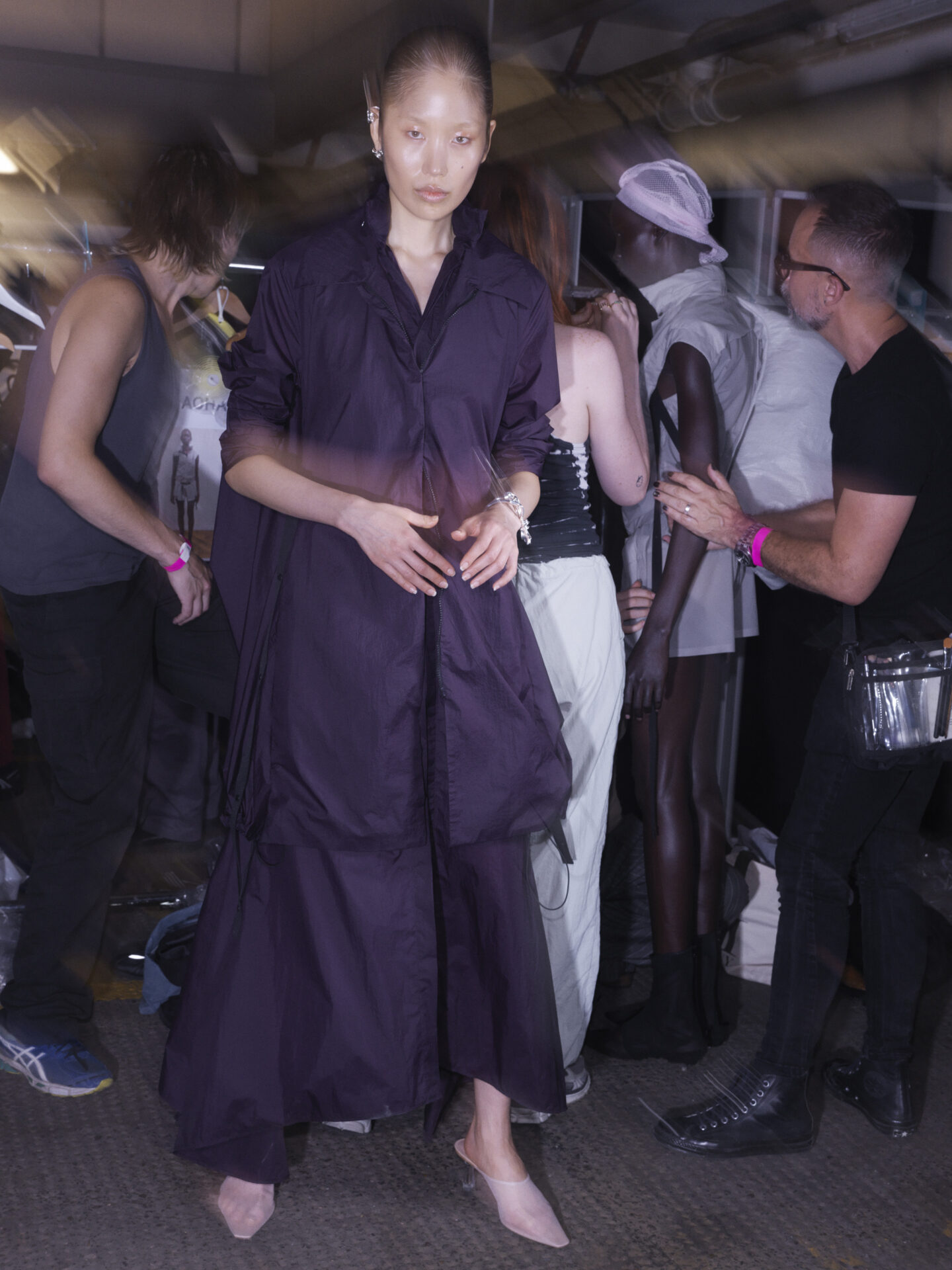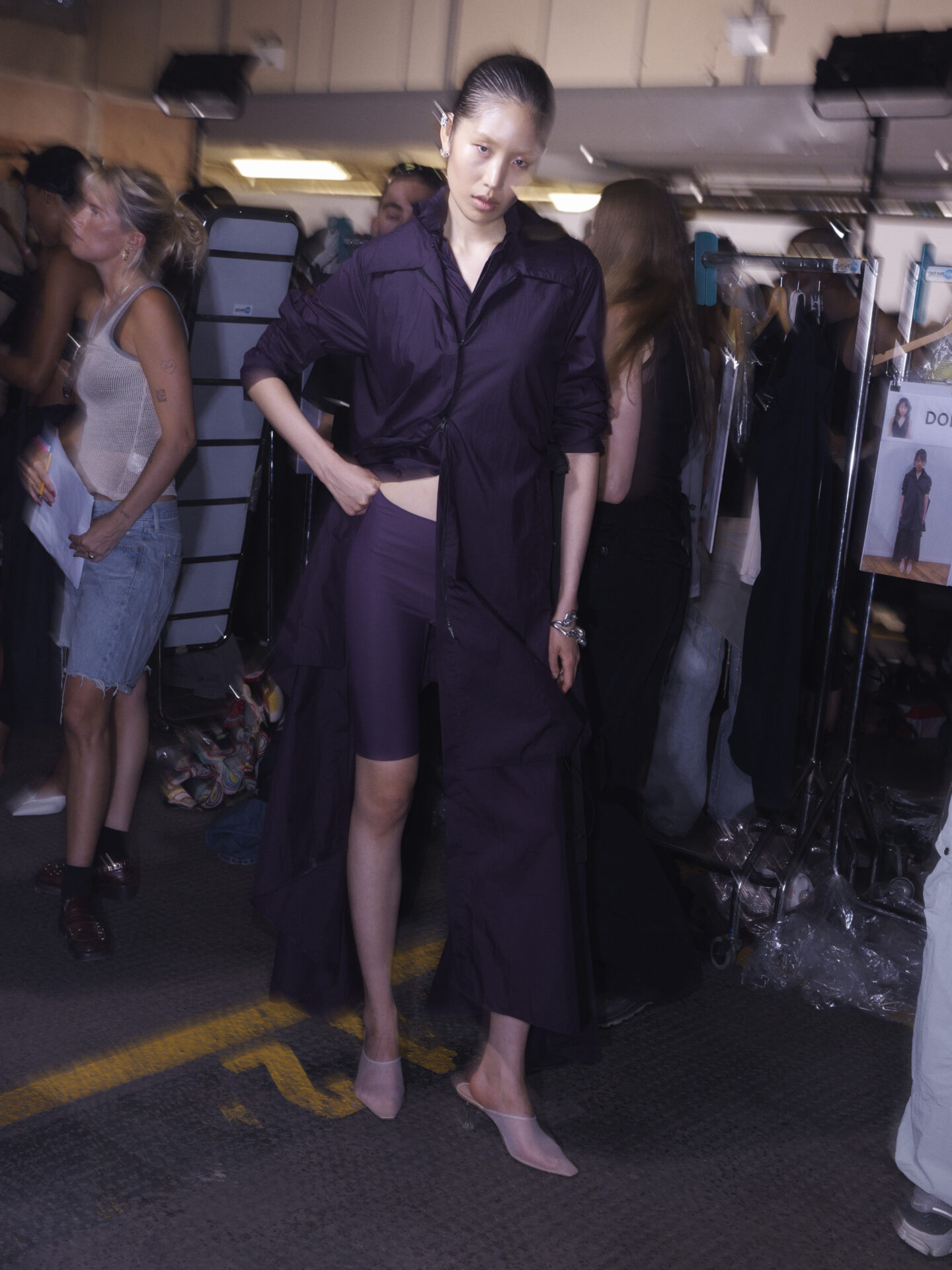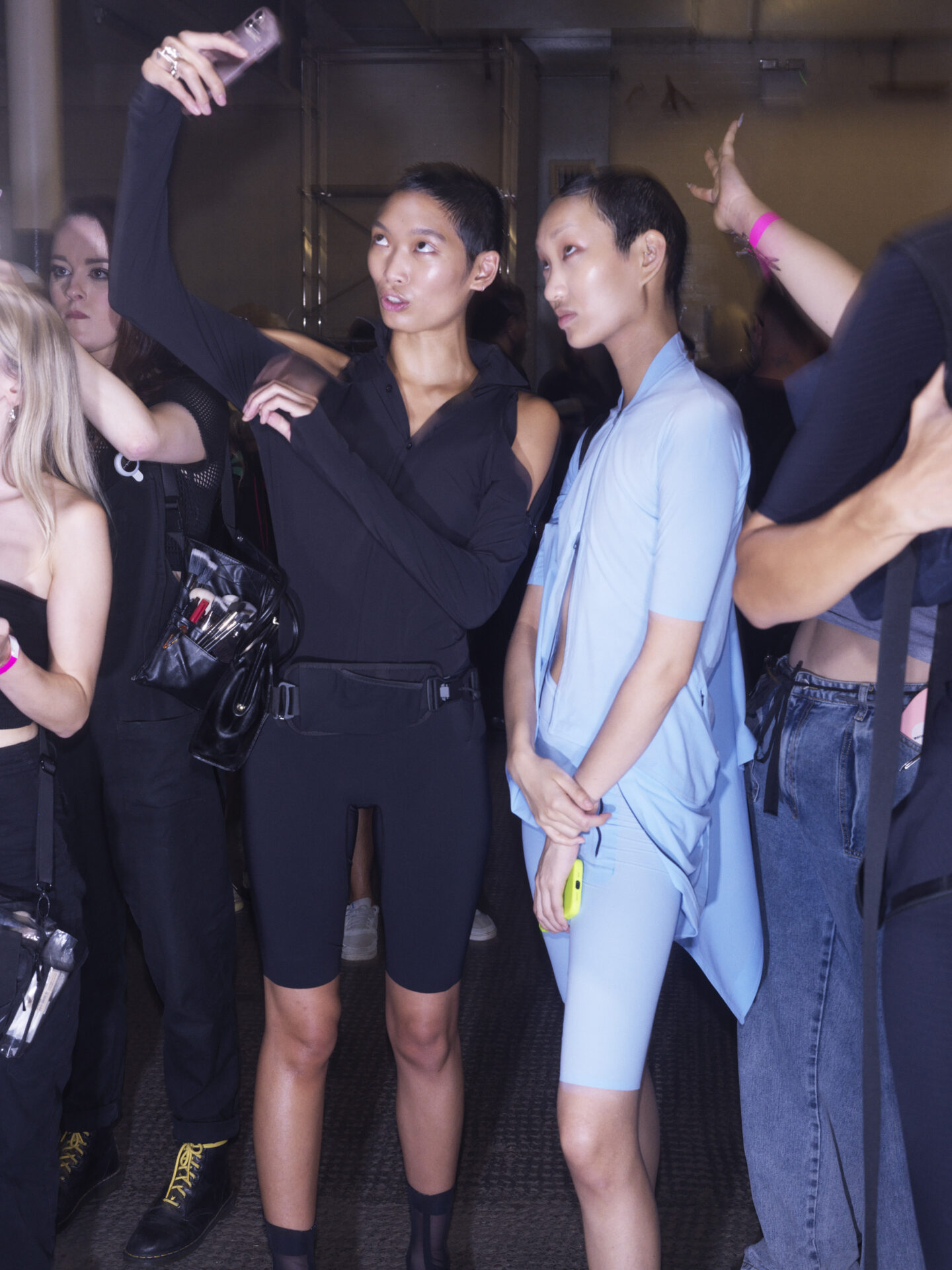In a world where utility and performance is increasingly being considered in the fashion industry, as consumers continue to embrace technical clothing in their wardrobes, Johanna Parv’s work has become relevant, and necessary. The London-based Estonian designer dresses a contemporary cosmopolitan woman, who seeks the highest possible performance from her wardrobe without losing an ounce of elegance.
Parv has a wealth of experience at renowned houses. After stints at Balenciaga and Christian Dior as a design assistant, she was an accessories designer at Burberry and Soar Running. Finally, in 2020, she built her own brand after graduating from Central Saint Martins, thus beginning her journey into the world of performance wear for the contemporary woman.
HIGHXTAR(H) – Tell us about the brand’s DNA and the values you prioritise
JOHANNA PARV (J.P) – Johanna Parv is imbued by my personal experience of cycling in the city as a woman. I strive to highlight and celebrate the space female bodies occupy in urban landscapes and create elegant solutions for active women. My work opens up conversations about possibilities of functional womenswear, which is predominantly a male-driven field. I believe Johanna Parv brings positive change to general customer behaviour: encouraging people to see alternative ways of buying and wearing. Johanna Parv proposes a solution-driven, ergonomic and long-lasting product. Part of my goal is to tell stories of women’s experiences to better understand their perspective of functionality and elegance.
(H) – Can you talk a little bit more about designing for “the active and modern women in the city”, that are your inspiration as mentioned in your DNA notes?
Not all women are used to thinking and questioning functionality and practicality in their everyday lives. We just have not asked this question enough times.
When you start living “active life” you are moving around in city space, commuting whatever way you have chosen – you realise there are some clothes and aspects of clothing that function better than others and we women have in my opinion different needs/interests than men. From a sense of style/cut point of view until details.
Garments that allow movement, breathability, storage and yet still looking sleek and elegant – allowing you to move through the city space and your day from morning to evening – and it is not yoga wear or generic sportswear which we are used to wearing – this is what I want to talk about. This kind of product needs research and engineering in a new way.
(H) – How did your Estonian origin and your experience of the London creative scene influence the way you look at fashion?
(J.P) – As an Estonian I have developed an outlook on “valuing the existing” in a way I have practicality written into my DNA – the tough weather conditions also make you think differently about what you should wear – it’s less about what I want to wear when it’s -20 degrees outside and ice everywhere. Or when it is dark most of the year around you need to think about visibility. Also people are more into handcrafts and knitted items and thinking more about the heritage and perhaps feel more nostalgic.
In London it is more about the all year around clothes, it never gets that cold here; it’s just wet and having 2 light layers usually work all year around, topped up with a scarf. In london you wear everything slightly more light but it needs a different type of performance, because we are able to cycle here and spend lots of time in undergrounds and heavily grounded spaces. Thus, we need protection of belongings, storages, water/windproof clothes that allow move fast and doesn’t take a lot of room. Also because it is not so cold in London there is always more room for fashion and an element of expressing yourself – in cities with more people there is more competition and information flow – it’s just natural that you feel more inspired, trends appear quicker and there’s more subcultures.
Being in London has resulted in combining these worlds. I search for ways to reuse vintage pieces and up-cycle materials, combining them with new pieces to propose products that fit customers’ contemporary lifestyle. Our current range has been divided into 4 core families: outerwear(cover-clothing), base layers (lycras), shirting and handbags. Our outerwear family consists of lightweight cover clothing made of recycled raw nylon, with a purpose to protect your already existing clothes and belongings from the elements. My design ethos ultimately is about considering the performance of the garments not only during but also post- commute always with longevity in mind.
(H) – You are known for your commitment to functional elegance and performance wear. What does it mean to you to be committed to functionality and high performance in elegant clothing beyond the simple superficial fact that is the concept of luxury nowadays?
(J.P) – It gives me more meaning and also focus. As a practical person who has studied design I want to design things that have the practicality and also play in it which I enjoy creating and wearing myself as a woman. There are so many questions we still haven’t asked about functional women’s clothing from a fundamental point of view. what we can do differently or what we would like to improve, rather than just creating different pieces of art to hang on your body – this is a different approach.
(H) – You’ve been through fashion houses like Dior, Balenciaga and Burberry, have any of these periods taught you something you’re grateful for today?
(J.P) – I combine my knowledge of engineered sportswear, accessories design and garment construction acquired through working at couture houses like Balenciaga and Christian Dior. I am grateful for being able to see so many different sides of the fashion industry in terms of processes, communication, quality ect.. I have learnt valuable skills from each experience – there are so many levels as a designer/director that we need to master and I am very interested in the art of making over the image of fashion itself.
(H) – What are the challenges of creating couture fashion that becomes very functional?
(J.P) – Creating technical fashion which is designed, considered and trialled can be very time consuming and materials can be expensive – as well as the industry is not built so that womenswear would have pockets and hoods – some manufacturers aren’t still sure how to price them as they see them as “too technical” – which is very surprising to me. So I need to train my makers and factories before we can work together as nothing is based on a basic block or shape – it’s all unique.
(H) – Is there craftsmanship in the manufacture of utility garments? Is technology the craftsmanship of sportswear?
(J.P) – All the garments are tailored and trialled many times in our studio before confirming the style every seam and details are very considered. My work is all handmade and constructed from scratch – that is why it is very much couture. We also integrate some more smart textiles which have amazing features like temperature control to adapt to changing weather conditions, moisture-wicking characteristics to keep users dry and comfortable during physical activities – however the more specific characteristics the higher is the cost. We also combine some more technical elements like laser cutting and bonding, however combining more advanced technology is most likely for the future as it requires a specialised team, facilities, funding, time or a meaningful collaboration.
(H) – How do you give the grace of an evening gown to a utilitarian design?
(J.P) – I think this is something that I can not disclose.
(H) – You practice a lot of up cycling in your creative process. Do you believe that upcycling is the way to disrupt the industry?
(J.P) – l value well made and beautiful products from the past, for example the oldd vintage bags. They aren’t made the same anymore and I see that there is beauty in re-purposing them. I guess instead of disrupting I think I encourage the industry to re-use.
(H) – Does sports thinking come into your work a lot? Say, values around competition, even around “winning”?
(J.P) – I think for me it is important, speed and being fast, and feeling capable of more. I think it is a philosophy of life but also in terms of choosing the right fabrics – and thinking about the right cut and the way designs make you feel and perform in everyday life. There is relation in all those elements.
(H) – The future is of course looking very technical, in terms of fabrics and production methods. Is there anything you’ve discovered or are particularly excited about technologically as you’ve begun to look more forward?
(J.P) – I like protective elements and how this can be combined into garments/materials. For instance like Rheon energy-absorbing super polymer. Which explores the flow of matter and how that matter reacts when force is applied to it.
(H) – Do you think about any collaboration with huge sports multinationals such as Nike or Adidas? How do you think this type of collaborative work would impact your brand?
(J.P) – Yes of course, it would be great! I would be able to access new manufacturing as well as a wider audience. It would hopefully lead to discovering new dynamics in both brands.
Sigue toda la información de HIGHXTAR desde Facebook, Twitter o Instagram

